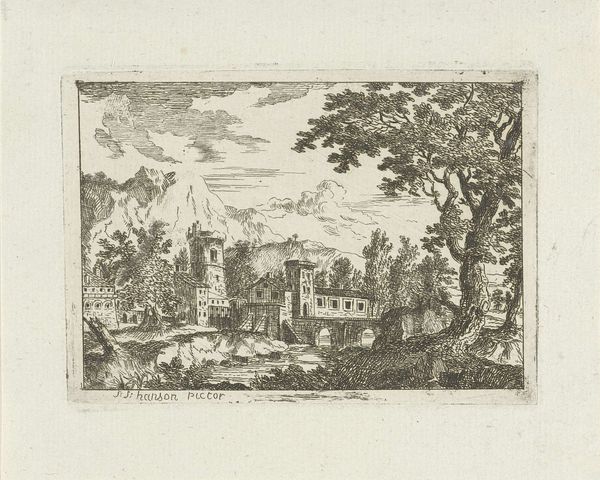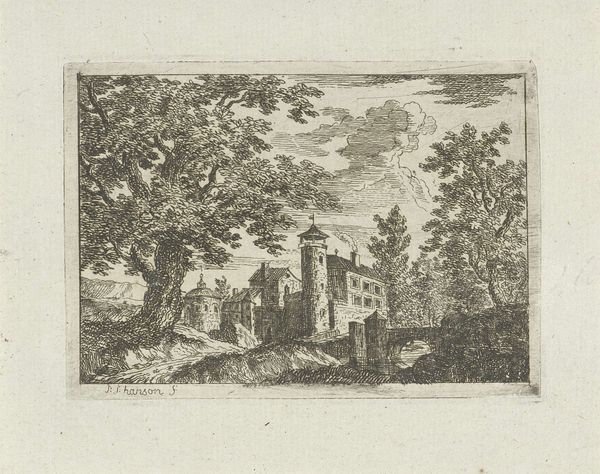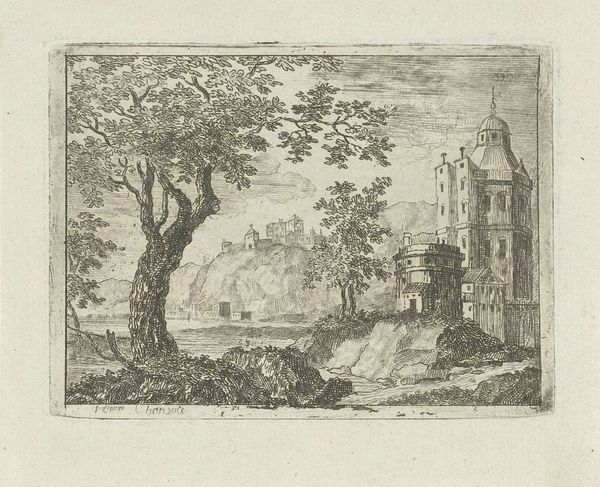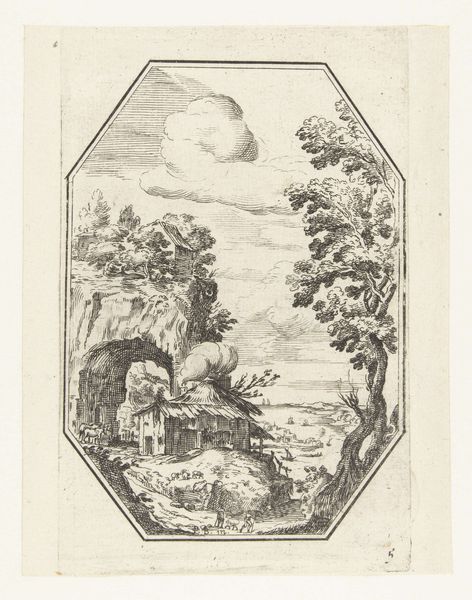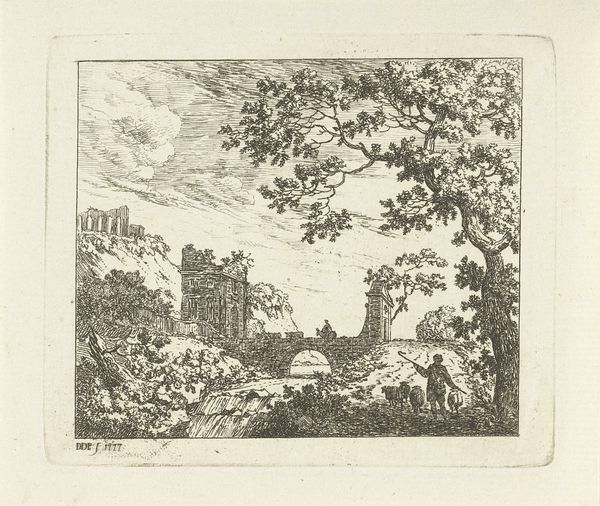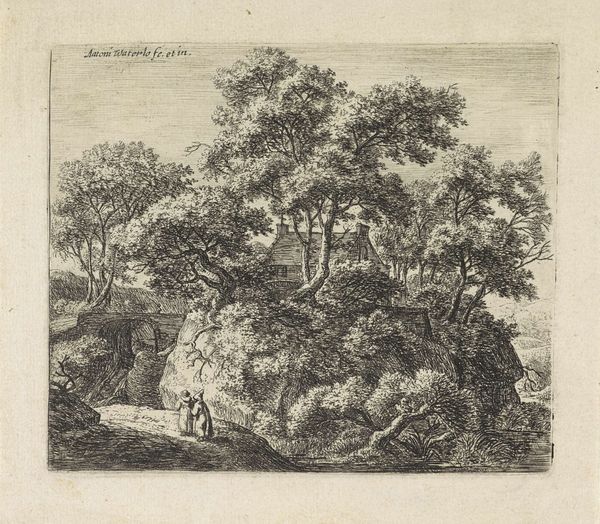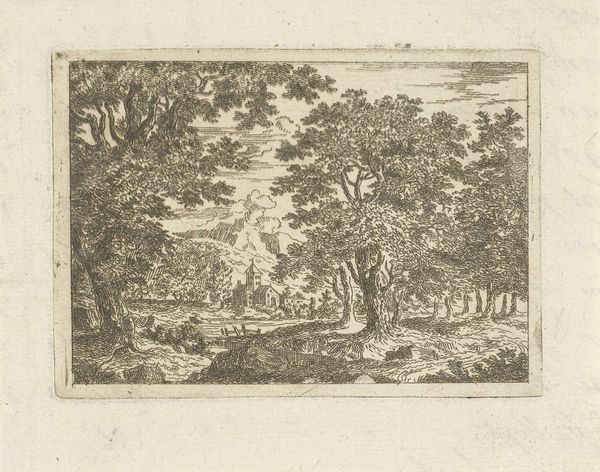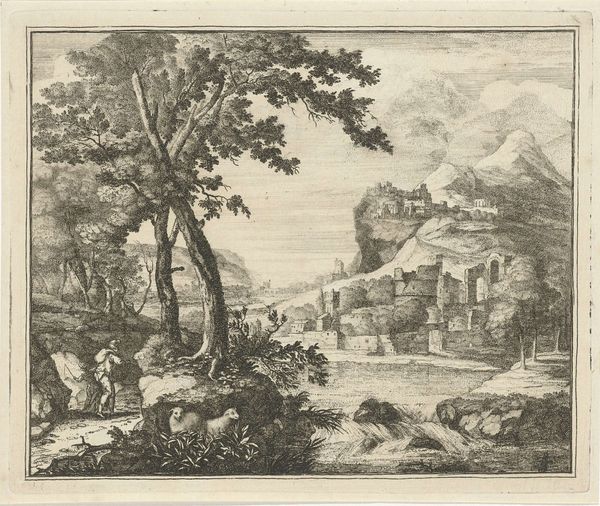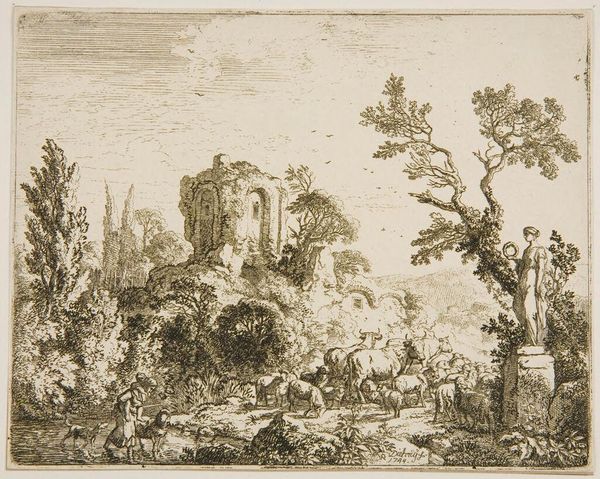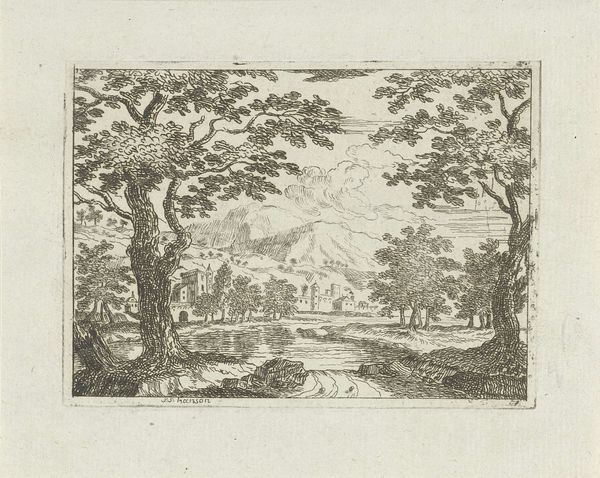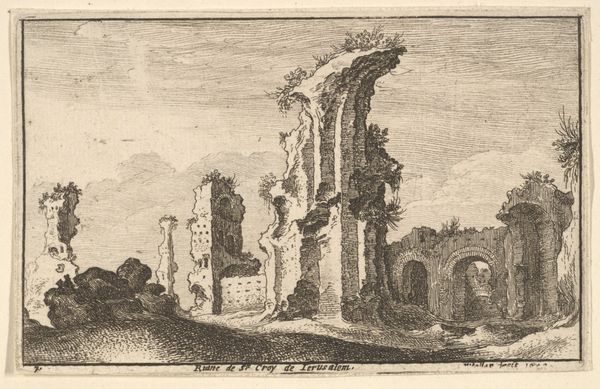
Dimensions: height 72 mm, width 102 mm
Copyright: Rijks Museum: Open Domain
Curator: Today, we're looking at an engraving by Jean Joseph Hanson called "Toren en stenen brug in een berglandschap," which translates to "Tower and Stone Bridge in a Mountain Landscape." It likely dates from between 1741 and 1799. Editor: It strikes me as a study in contrasts. The landscape teeters between the romantic allure of nature and the rigid imposition of human construction. There's a sense of...contained wildness. Curator: Exactly. Note how Hanson uses the conventions of Baroque landscape to amplify that contrast. The jagged rocks and gnarled trees, all rendered in stark detail, surround the imposing tower. Water, the vital force of nature, literally flows around these rigid structures. What might this juxtaposition communicate about the era? Editor: Power, certainly. The tower, clearly a symbol of authority, is seemingly at odds with nature yet intimately part of it. One has to remember who this power was meant to serve, especially when land, so vital to oppressed peoples, becomes colonized through architectural landmarks. It reads almost as an assertion, a declaration of dominance over the very land itself. Curator: Interesting observation. In terms of symbols, it is the tower, specifically, that speaks to the endurance of systems and ideologies, built—quite literally—on foundations of stone. Consider how towers and bridges were often integrated into trade routes and asserted authority and control, reflecting the sociopolitical dynamics of the Baroque era. Even the clouds feel imposing! Editor: Definitely. In modern context, that visual contrast still carries meaning. How are resources distributed? Who benefits, and who is displaced when these architectural claims are laid to a landscape? The very act of making such a print, and distributing it widely, speaks to something of those historical conditions, the systems through which knowledge and power were then reproduced. Curator: I hadn't quite considered that angle. It’s interesting how these carefully composed landscapes often reflect broader ideologies about power and ownership. Thank you for pointing out the modern context! Editor: Of course. Seeing through these landscapes we may be able to reframe discussions of land use and control to question underlying beliefs about natural landscapes that were, even then, not neutral or passively there for the taking.
Comments
No comments
Be the first to comment and join the conversation on the ultimate creative platform.
